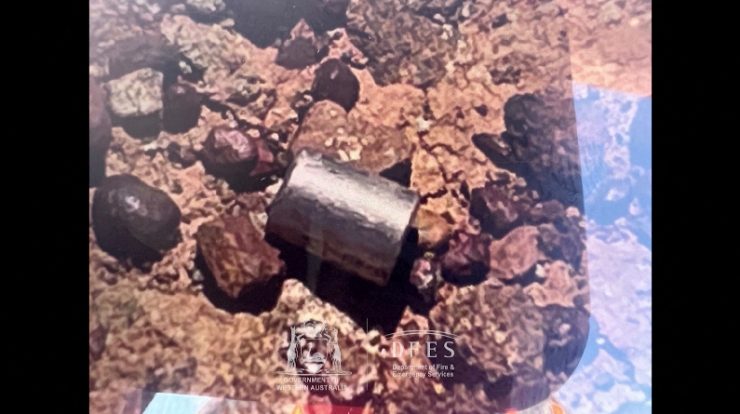
According to reports out of Western Australia, authorities have located a missing radioactive capsule. Responders had “found the needle in the haystack,” as the expression goes. When the item went missing while being transported along a 1,400km (870 mile) route across the state, a massive search was launched.
An up-close image of the pea-sized capsule, which could cause serious harm if handled, was released by authorities. The capsule was found on the ground among tiny pebbles. The right capsule, measuring 6mm (0.24 inches) in diameter and 8mm in length, was located with the help of a serial number. Damage to the skin, burns, or even radiation sickness could result from its trace amounts of Caesium-137.
Rio Tinto, a major mining company, has apologised for losing a density gauge. It will be placed in a lead container after a “hot zone” of 20 metres is set up around the capsule. It will be kept overnight in a safe location in Newman before being moved on Thursday to another safe location in Perth. State emergency services praised “inter-agency teamwork in the face of seemingly insurmountable odds” when they announced the discovery.
The capsule was discovered by a vehicle travelling at 70 kilometres per hour (about 43 miles per hour) that was equipped with special equipment able to detect radiation. The capsule was discovered some two metres (seven feet) from the roadside using portable detection equipment. Australian rescue workers looking for a radioactive capsule on the side of the road, as depicted in a handout image.
The instrument was being used as a density gauge at Rio Tinto’s Gudai-Darri mine in Western Australia’s outback Pilbara region. Simon Trott, head of the company’s iron ore division, said, “The simple fact is the device should never have been lost.” He was grateful to the authorities for the “pretty incredible recovery” of the capsule. If the government requests it, Rio Tinto will gladly pay for the cost of the search.
The relevant laws in Australia are going to be reviewed, according to the government. At a press conference in Perth, Prime Minister Anthony Albanese said the current fine for improperly handling radioactive materials is “ridiculously low.” In its current form, the fine is A$1,000 (about US$700 or £575) plus A$50 (about US$35 or £30) per day for each day the offence is committed.
See Also: Two Tips To Gurantee An Improvement In Your Digital Marketing Skills
According to Western Australia’s chief health officer Andrew Robertson, exposure to even minute amounts of the metal is equivalent to “receiving 10 X-rays in an hour, just to put it in context, and… the amount of natural radiation we would receive in a year, just by walking around.” At one point, up to two weeks ago, the capsule might have vanished.
The space dedicated to finding the missing capsule was extensive. Alternatively, it is about the same as driving from Washington, DC to Orlando, FL, or from John O’Groats in northern Scotland to Land’s End in south-west England. The desert in this state is extremely isolated and has a very low population density relative to the rest of the country. One-fifth of the people in Western Australia call the state capital, Perth, home.
A contracted firm picked up the gauge from the mine site on the 12th of January and was transporting it to a storage facility in Perth’s north-east suburbs. The radioactive capsule was missing and the gauge was broken when it was unpacked for inspection on January 25. There was also an insufficient number of mounting hardware components, with only three bolts and screws instead of four.
Authorities speculated that loose bolts during transport contributed to the capsule’s unintentional release through the casing and truck gaps. Rio Tinto had just begun an effort to repair its reputation in Australia before this incident occurred. Rio Tinto sparked public outcry in 2020 when it blasted rock shelters that had been in use for 46,000 years at Juukan Gorge, Western Australia, to expand an iron ore mine. More than 20 women at Rio Tinto reported rape or attempted rape or sexual assault over a five-year period, and a parliamentary inquiry last year concluded that sexual harassment was pervasive at Australia’s mining firms.

